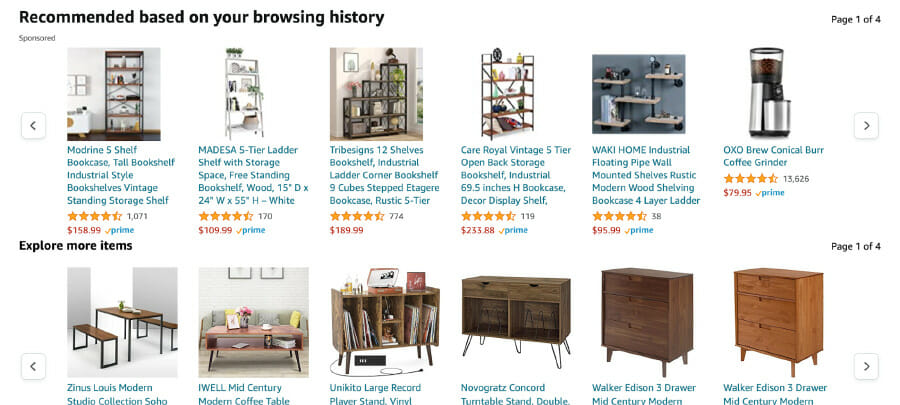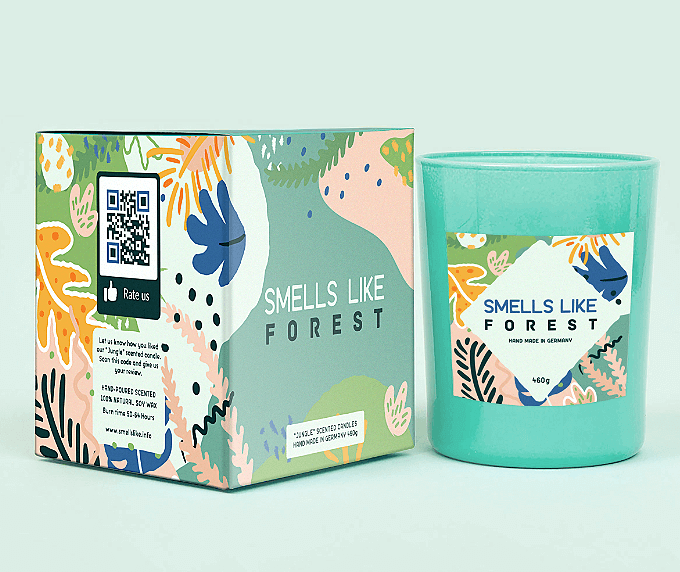Logistics
Industries
Technology & Innovations
E-commerce
E-commerce Fulfillment Services
Lease & Maintenance
Semi Trucks
Logistics
E-commerce
Lease & Maintenance
Buy Used Trucks

In this article, we worked with our partner Malomo as a contributor for their take on the causes of customer churn and how e-commerce businesses can reduce their churn rate during the post-purchase experience.
Fact: no brand likes to see its customers say goodbye.
In a perfect world, customers would discover your product or service, run off into the sunset, and never look back.
But the reality in e-commerce is that customers leave. It's simply a part of the DTC lifecycle. They try other brands, they dial back their spending - and not every customer will stick around forever.
The good news? There are actions that brands can take to boost customer satisfaction, strengthen relationships and ultimately reduce churn.
But, before we get into that - let's take a closer look at customer churn itself.
Customer churn occurs when a customer stops purchasing goods from a company. It's one of the most vital metrics for e-commerce businesses. Why? It tells a brand whether what they're doing is working for their customers - or not. Plus, it gives them the opportunity to use this invaluable information to inform future business decisions that promote customer success.
To understand customer churn and the effect it has on a business, brands will need to calculate the churn rate with a few numbers handy:
Simply divide the number of customers who left by the starting number, multiply by 100, and you've got your customer churn rate. For example, an online shop that started with 700 customers in the month of September, and ended with 650 would have a churn rate of about 7%.
You may be thinking, 7% doesn't seem too bad! Especially when it's inevitable that customers will leave. But the fact is that it takes much more to acquire those 50 customers who end up leaving than to retain the existing 650 customers.
As you can see, customer churn is directly related to revenue. There's no getting around it - too much churn will negatively impact a brand's bottom line.
With customer acquisition costs through the roof, brands are spending quite a bit of cash in terms of bringing new members on board. Companies with high churn are likely putting out hundreds of thousands of dollars to attract new customers who could end up leaving after just one purchase.
The results? Diminished customer lifetime value, loss of trust from your backers and audience, and an inability to truly scale.
Now, let's take a look at the opposite side of the equation.
Companies with low customer churn have a larger base of loyal customers who are making repeat purchases. With the 80/20 principle in mind, 20% of these returning customers actually account for 80% of a brand's revenue. Plus, it's a well-known face in retail that repeat customers spend more money than new customers.
But, wait, we were talking about customer churn - how did we get stuck on existing customers?
It's all connected. More repeat customers = less customer churn. More customer churn = fewer customers who come back to purchase more.
Without further ado, here at the 7 top causes of customer churn, and what brands can do to combat them.
Did you know that over 70% of consumers expect personalized interactions with brands, and actually get frustrated when a personalized experience doesn't happen? With the customer experience at the forefront of positive brand interactions, personalization is more important now than ever before. Personalization is a differentiator in the e-commerce ecosystem, encouraging customers to stick with the brand that take care of them - even after they've made a purchase.
What to do:
Show your customers what they want to see. Brands can easily do this by segmenting their customer communications according to customer browsing and purchasing history. Customers are more likely to engage with products that complement the ones they've spent time researching or buying.
Amazon's browsing history algorithm pulls in products based on whatever you're spending time looking at:

In addition to pre-purchase communication, when your customers do make a purchase, ensure that your post-purchase communications are just as enticing and valuable:
"All too often, brands send generic carrier tracking pages that lack any personalization. This can be a major turn-off for customers, causing them to churn. Our recommendation is to use your customer data to provide a customized, individual experience." – Malomo
We've all experienced brand communications that emphasize "24 hours only!" or "last chance for 50% off!" Flash sales and limited discounts are incredibly effective at getting prospective customers to commit to a purchase. However, they're not so great at getting customers to come back again.
Using only one-time discounts will likely attract the "wrong" customers: one-time purchasers. Who among us has not taken advantage of a sale, only to never purchase from that brand again?! While it may seem like a quick way to gain traction and increase revenue, discounts are actually one of the biggest causes of customer churn, which in turn, hurts your bottom line in the end.
What to do:
Instead of rewarding customers who've never purchased before with a discount, try changing it up - instead, reward those who have proven themselves as loyal brand advocates. Implementing a loyalty (or VIP) program can combat a high customer churn and help retain customers by creating gamification within the repeat purchase experience. Essentially, customers will have an incentive to buy more than once.
As we've said time and time again, the most successful brands offer an exquisite customer experience. The least successful brands? Well, it's likely they aren't meeting customer expectations for a seamless buying journey. Poor customer service is one of the top reasons for churn due to the simple fact that customers churn when they aren't satisfied.
Picture this: you've just purchased a sweater from a new brand you've been watching closely on Instagram for the past few weeks. To your dismay, your sweater comes in the wrong size, rendering it un-wearable.
You head to the site, only to find that there isn't a clear returns process or self-service portal, and you aren't able to get in touch with the customer support team. You take the loss, maybe write up a negative review, and vow never to purchase from the brand again.
What to do:
Take a customer-centric approach during every touchpoint of the buying journey. For example, before customers even start to think about asking questions, create an FAQ portal where they can proactively find important products and process information. For example, when things go downhill in the shipping journey, don't wait for the customer to come to you with a complaint. Instead, proactively reach out to them with updates as soon as possible.
"Lack of proactive communication can be another key reason for customer churn. Customers want to be kept in the loop on the status of their order, and if they don't hear anything from the brand, they may assume that something has gone wrong. Even when orders are delayed, it's important to provide those updates before a customer finds out for themselves." – Malomo
Next, make sure your customer success team has a clear procedure in place for escalating issues and requests. If your audience uses direct messaging on social media more than emails, make sure this channel is covered during peak hours to offset long response times. Or, invest in chatbots or live chat for easier, quicker communication.
Lastly, don't forget about the power of returns. The smoother the return process, the more likely that customers will give your brand another chance. In fact, over 90% of consumers will buy from a retailer again if they offer an easy returns process.
"Many brands lack a clear returns process, which can cause customers to become frustrated and more likely to leave. A simple returns process that is easy to understand can go a long way in reducing customer churn." – Malomo
Errors in payment processing may not seem like an e-commerce brand's biggest worry (only about 2% of monthly payments fail). That's not much when we look at it month over month. But, by the end of the year that small percentage quickly grows into a whopping 22% annual loss in revenue... which suddenly seems like a much more dire situation.
When customers' credit cards fail and they aren't made aware, it's very possible that they won't take the issue into their own hands, instead leaving with a less than satisfactory experience.
What to do:
Practice dunning management for proactive communication and automated payment retry. With the proper dunning practice, companies can reach out to their customers via text, email, or in-app notifications to initiate a payment recovery process. The results? Fewer payment failures, a longer customer lifecycle, and the opportunity to connect and build a stronger customer relationship.
In 2022, consumer behavior is not the same as it once was. Whereas customers once thought of the digital landscape and the physical landscape as completely different playing fields, it's clear that these landscapes are melding more and more each day.
How? Consumers begin researching brands on social media before they set foot in a physical store. They buy products online and return them in person. They shop via Instagram and TikTok as well as malls and boutique stores.
In this new digitally-forward yet in-person environment, it's up to brands to keep pace with increasing expectations for a seamless omnichannel experience - meaning that no matter where they interact with a brand they'll get the same type of service.
What to do:
Bridge the 'experience gap' by creating tangible moments for online and in-person consumers. This can look like ensuring alignment between all browsing channels, making sure packaging is branded the same way, or utilizing fulfillment marketing campaigns like discounts and thank you notes in both in-person and online purchases.
Plus, invest in an updated tech stack that enables them to offer things like BOPIS, branded communications, and overall brand awareness at every touchpoint. Without the proper technology in place, customers will be left with a disjointed experience.
The goal is to guarantee the same level of service whether a customer enters the buying journey from a mobile device, a laptop, or on foot!
This is one of the sneakier causes of customer churn. It isn't exactly what a brand is doing "wrong" but rather what they're not doing enough of. It's one thing to ship your products out on time, but going above and beyond for your existing customers could give them the incentive to continuously return to your brand.
Think of it this way: a sushi restaurant that surprises customers with a special roll on the house or a free soup and salad with dinner is much more likely to have higher rates of customer retention. Why? They're making an effort to delight and surprise their customers every time they purchase. Even the smallest of gestures can dramatically reduce customer churn.
What to do:
Invest in fulfillment marketing to connect with your customer base even after they've purchased a product. What is fulfillment marketing? It's a way to bridge marketing techniques and fulfillment while adding customization and personalization to the post-purchase journey.
Something as simple as a quick thank you note or a discount code for another purchase are successful fulfillment marketing techniques. Alternatively, rather than adding extras, take the time to make sure your packaging is branded for a more cohesive experience.
Pro tip: include your socials, FAQ page, or links to customer surveys as QR codes on your packaging.

Another reason why customers churn? They feel like their needs aren't being met. Asking for customer feedback is a simple yet extremely effective way of improving customer satisfaction and combating high churn.
It's a bit of a myth that consumers will only be vocal when they're having a negative experience. Of course, many reviews are fueled by angry customers, but when brands reach out to their customers as an ongoing process rather than a reaction to a negative comment - they'll gain a terrific amount of insight into what their most loyal customers are enjoying.
What to do: Develop a method to continuously track satisfaction ratings. For example, your brand could run a net promoter score (NPS) survey every quarter to check the pulse of your audience. In addition to reaching out, have your customer success teams analyze customer feedback each time. By doing this, you'll have a better understanding of customer behavior and perhaps a few actionable tips from your audience.

It's clear that most causes of customer churn happen during the post-purchase experience. Why? There's a certain power that the post-purchase experience holds. Like any newfound connection, there's a certain level of excitement to the "chase," but what happens afterward is ultimately the deciding factor of a healthy and long-term relationship.
"If you are a DTC brand looking for ways to improve your customer retention, you have to look at your post-purchase experience. Today's brands are not built through advertising, but rather built through experiences and touch-points with each customer. It is more important than ever to continue communicating with your customers and delivering customer value after the first transaction." – Malomo
Without the proper attention and care after making a purchase, like poor customer service or blasé packaging, customers will hop to other brands that show more potential to meet their growing expectations. And in today's highly saturated e-commerce environment, there are plenty of brands to choose from.
Malomo believes order tracking is the most under-utilized, highest potential marketing channel. The average number of times that people view order tracking pages is 4.6 times per order. This shows that consumers are highly motivated to engage with your brand right after they make a purchase. Plus, we all know how exciting it is to wait for our packages to arrive.
By optimizing your post-purchase experience with personalization, proactive communication, transactional messaging, and an intuitive returns process, you can reduce customer churn and create a better experience for your customers. Malomo can help you improve customer retention and take your post-purchase experience to the next level.